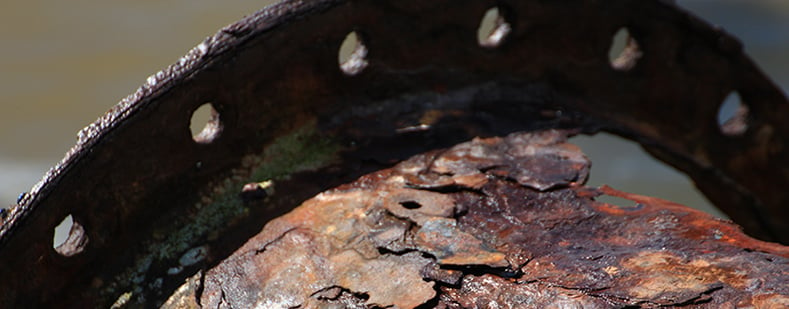When paint starts to peel and bubble, it’s extremely important for the integrity of the asset to remove the old coating and apply a new one. As protective coatings fail, substrate corrosion can accelerate, leading to long term asset damage. If failed coatings and corrosion are not addressed, the damage may not be repairable and the asset may need to be replaced, ultimately costing the owner substantially more money.
Sandblasting or Abrasive Blasting is often the fastest, most efficient method of coatings removal from metallic or masonry surfaces. Bridges, tanks, the inside and outside of pipe, and many other pieces of infrastructure requiring recoating would benefit from abrasive blasting. Abrasive Blasting is a superior method of surface prep compared to other coatings removal processes such as ultrahigh pressure water blasting (UHP), hand tooling, grinding, or chemical strippers.
When a surface is abrasive blasted, the paint or coating is removed and a surface profile is created. The depth of the profile is dependent on many factors including: the type of abrasive used, hardness of the surface, pressure and angle of the nozzle, as well as the starting condition of the surface. Bigger, harder abrasives tend to create a larger profile. Surface profile is measured in mils or microns. There are many tools of measuring surface profile. The most common are pin gauges and replica tape.
The rate of coatings removal (Square feet or square meters per hour) can vary based on a number of factors, including coating thickness, coating adhesion, substate type, abrasive type, blasting pressure, and blaster technique. When trying to determine the cost of a coatings removal project, it’s important to blast test samples to try and accurately calculate removal rates. Once an average removal rate can be calculated, nozzle time and media consumption can be estimated. Because of the number of different factors, it’s best to do samples prior to estimating the cost of a project.
Choosing the best abrasive blasting media for your project is critical to job success. Low quality blast media like coal slag costs less than high quality abrasives but create much more dust during blasting. Cheaper abrasives typically contain hazardous material like silica, beryllium, or other heavy metals. Less money spent on abrasives could mean more project funds dedicated to containment, negative air, clean up, and disposal.
Sponge Jet manufactures a wide range of profiling Sponge abrasives and cleaning agents that are deemed “less toxic blasting material” by OSHA.








